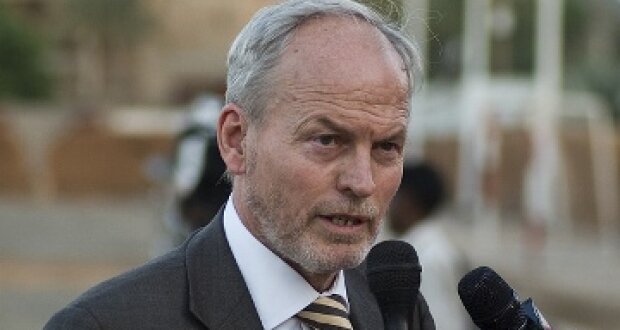THE contrast is stark of the two Australians of Lebanese descent. On the front pages is the alleged misfit among five caught in the dragnet of police raids in Melbourne to nip in the bud the first explosive plot of home-grown terrorists.
In the business pages the same day, Jac the Knife — so-called not for any nefarious reputation of his handling of the blade but for his wielding of the axe in management downsizing — was being anointed chairman of the world’s biggest resources group, BHP Billiton.
The alleged terrorist was taken from his working-class Glenroy home in pre-dawn raids on 19 properties, mostly in metropolitan Melbourne.
That’s a stone’s throw — 12km to be exact — from the similarly humble Northcote.
That’s where northern Lebanon-born Jacques Nasser first plotted his way up the corporate ladder, via a business degree from the then Royal Melbourne Institute of Technology, now RMIT University. RMIT began life in 1881 as the Working Men’s College.
From those humble beginnings, Nasser rose to become head of Ford Motor Company in Michigan in 1999, before relinquishing the position to a Ford scion in 2001.
At 61, Nasser has scaled lofty heights, now splitting his time between Australia and the United States as a dual citizen.
It’s not to be held against him that his elevation to the top of Melbourne-headquartered BHP Billiton should be relegated to the back pages.
Terrorism is cause for alarm and given blanket media coverage. On Aug 4, federal agents and Victoria police swarmed the 19 properties, mostly in north Melbourne, including Broadmeadows where Nasser started as a financial analyst with Ford Australia.
The raids have raised mixed responses. There is relief of the effectiveness of the security agencies. There are allegations of police insensitivity towards “new migrant” communities and claims of “backlash” against members of these communities, many of them Muslim.
There are counter-allegations of ghetto mentality hindering positive integration into Australia, calling into question commitment to Australian nationhood.
The police case is that the alleged terrorists, sympathetic to the Somali al-Shabab group with links to al-Qaeda, had been plotting to launch a suicide attack on an Australian army base in Sydney.
Police had been keeping track of the plotters since January and launched the pre-emptive raids when it learned that The Australian newspaper had got wind of this and was threatening to blow the cover. (Which raised questions of media ethics, but that’s another story.)
No guns were found, nor explosives. Which was the point of the exercise, police claim: pre-emptive, before the plotters could take their plan that far.
All five alleged terrorists between the ages of 22 and 33 — two of Lebanese descent and three of Somali — had spent practically all their lives in Australia. Which raised questions about home-grown terrorism.
Australia is among countries most generous in its acceptance of refugees, most recently from the Horn of Africa, and asylum seekers. The question is, having allowed them entry, was enough being done — or did Australia(ns) have the wherewithal — to successively settle them.
“Just parking them in the suburbs is not enough,” Greg Barton, director of Monash University’s Centre for Islam and the Modern World, tells the New Sunday Times.
“They have come from the most violent scenarios we can imagine. They need strong friendships so that when someone comes with a seductive message, it doesn’t have such appeal,” Barton says of potential recruitment into global terrorism.
From the perspective of multi-faith interaction, Des Cahill adds: “There is no tradition of pluralism and democratic governance (from where the refugees come from).
“It’s a long learning process. Midway through, we must support the religious moderates,” says Cahill, professor of intercultural studies at RMIT.
Cahill is chairman of the Australian chapter of the World Conference of Religions for Peace, and deputy moderator of the executive committee of the Asian Conference of Religion and Peace.
He is programme director of the Parliament of the World’s Religions (tinyurl.com/6bkpzc) to be held in Melbourne in December.
So what does the apparent incubation of home-grown terrorist cells that last week’s raids tell us, say of the success or otherwise of the integration of refugees into Australia?
Dalal Elhage Smiley, herself of Lebanese descent having migrated to Australia in 1976, uses as mirror of community attitude the security and emergency agencies, which she says are trying hard to do what is right.
“There is much goodwill at the top and among the leadership,” says Smiley, manager, diversity development, at the Melbourne Metropolitan Fire Brigade.
The Australian Federal Police have a community liaison team. Victoria police have a multicultural advisory committee, of which Smiley is a member. It also has a multi-faith advisory council.
At a broader level, Smiley cites prominent Muslim commentator Waleed Ali, a lecturer at the Global Terrorism Research Centre at Monash University, about how Australians tend to define themselves by excluding people rather than being inclusive.
“Unlike (in) the US, we have a culture of cultures rather than a civic collective culture of citizens and that tends to drive a wedge between us. Thus, the Somali issue becomes one that is un-Australian.
“Mind you, many of us (recent) migrants do not do our cause justice, and rather than speak from a position of strength, we fall for the divisive discourse.”
Cahill commends “interfaith interaction”.
He has no doubt Melbourne’s credentials gave it hosting rights to the Parliament of the World’s Religions, held once in five years, and sought-after in its Olympic-esque bidding process.
The initial 20 cities came down to Melbourne, Delhi and Singapore.
“Melbourne was awarded on its harmony, multicultural and interfaith relationships within Australia and our focus (during the conference) on Aboriginal and indigenous spirituality,” says Cahill.
Barton sees events over the past week as positive. It’s nipped in the bud any signs of radicalisation early in the cycle, and reinforced the need to build social capital.
Source:
![]()
By By K.C. Boey






